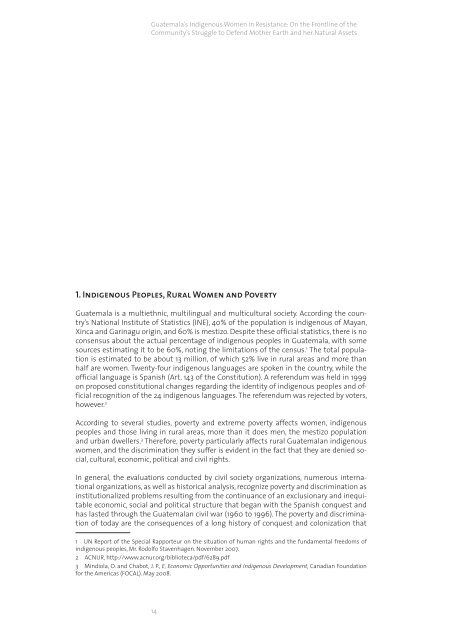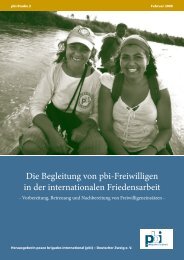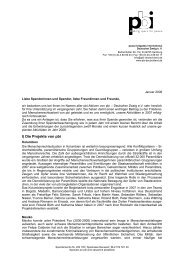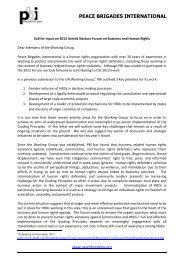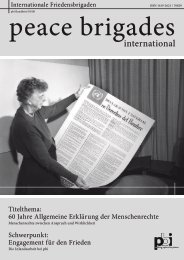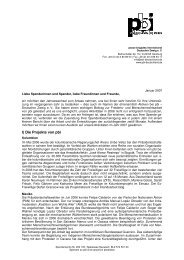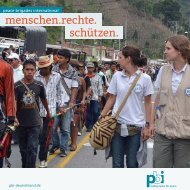Guatemala's Indigenous Women in Resistance (pdf ... - PBI Guatemala
Guatemala's Indigenous Women in Resistance (pdf ... - PBI Guatemala
Guatemala's Indigenous Women in Resistance (pdf ... - PBI Guatemala
Create successful ePaper yourself
Turn your PDF publications into a flip-book with our unique Google optimized e-Paper software.
<strong>Guatemala</strong>’s <strong>Indigenous</strong> <strong>Women</strong> <strong>in</strong> <strong>Resistance</strong>: On the Frontl<strong>in</strong>e of the<br />
Community’s Struggle to Defend Mother Earth and her Natural Assets<br />
1. <strong>Indigenous</strong> Peoples, Rural <strong>Women</strong> and Poverty<br />
<strong>Guatemala</strong> is a multiethnic, multil<strong>in</strong>gual and multicultural society. Accord<strong>in</strong>g the country’s<br />
National Institute of Statistics (INE), 40% of the population is <strong>in</strong>digenous of Mayan,<br />
X<strong>in</strong>ca and Gar<strong>in</strong>agu orig<strong>in</strong>, and 60% is mestizo. Despite these official statistics, there is no<br />
consensus about the actual percentage of <strong>in</strong>digenous peoples <strong>in</strong> <strong>Guatemala</strong>, with some<br />
sources estimat<strong>in</strong>g it to be 60%, not<strong>in</strong>g the limitations of the census. 1 The total population<br />
is estimated to be about 13 million, of which 52% live <strong>in</strong> rural areas and more than<br />
half are women. Twenty-four <strong>in</strong>digenous languages are spoken <strong>in</strong> the country, while the<br />
official language is Spanish (Art. 143 of the Constitution). A referendum was held <strong>in</strong> 1999<br />
on proposed constitutional changes regard<strong>in</strong>g the identity of <strong>in</strong>digenous peoples and official<br />
recognition of the 24 <strong>in</strong>digenous languages. The referendum was rejected by voters,<br />
however. 2<br />
Accord<strong>in</strong>g to several studies, poverty and extreme poverty affects women, <strong>in</strong>digenous<br />
peoples and those liv<strong>in</strong>g <strong>in</strong> rural areas, more than it does men, the mestizo population<br />
and urban dwellers. 3 Therefore, poverty particularly affects rural <strong>Guatemala</strong>n <strong>in</strong>digenous<br />
women, and the discrim<strong>in</strong>ation they suffer is evident <strong>in</strong> the fact that they are denied social,<br />
cultural, economic, political and civil rights.<br />
In general, the evaluations conducted by civil society organizations, numerous <strong>in</strong>ternational<br />
organizations, as well as historical analysis, recognize poverty and discrim<strong>in</strong>ation as<br />
<strong>in</strong>stitutionalized problems result<strong>in</strong>g from the cont<strong>in</strong>uance of an exclusionary and <strong>in</strong>equitable<br />
economic, social and political structure that began with the Spanish conquest and<br />
has lasted through the <strong>Guatemala</strong>n civil war (1960 to 1996). The poverty and discrim<strong>in</strong>ation<br />
of today are the consequences of a long history of conquest and colonization that<br />
1 UN Report of the Special Rapporteur on the situation of human rights and the fundamental freedoms of<br />
<strong>in</strong>digenous peoples, Mr. Rodolfo Stavenhagen. November 2007.<br />
2 ACNUR, http://www.acnur.org/biblioteca/<strong>pdf</strong>/6289.<strong>pdf</strong><br />
3 M<strong>in</strong>diola, O. and Chabot, J. P., E, Economic Opportunities and <strong>Indigenous</strong> Development, Canadian Foundation<br />
for the Americas (FOCAL). May 2008.<br />
14


